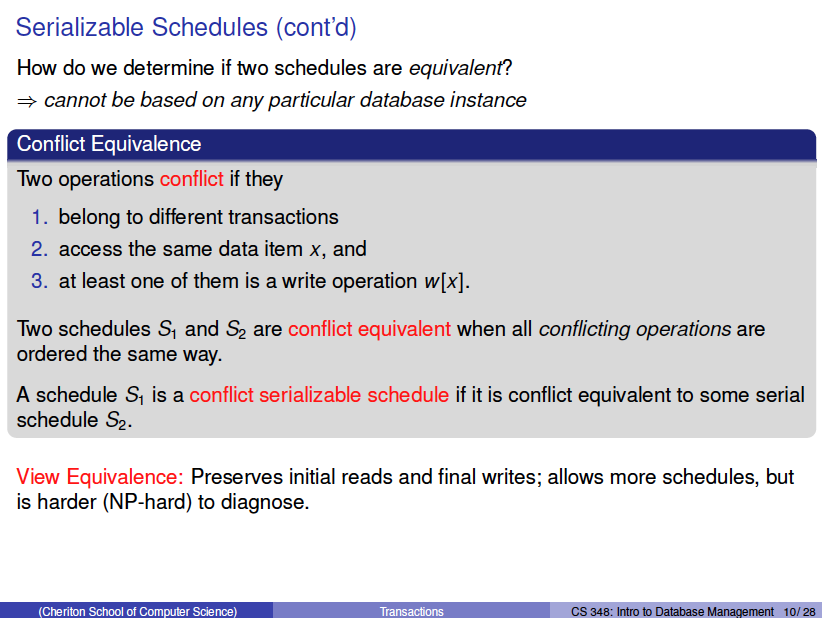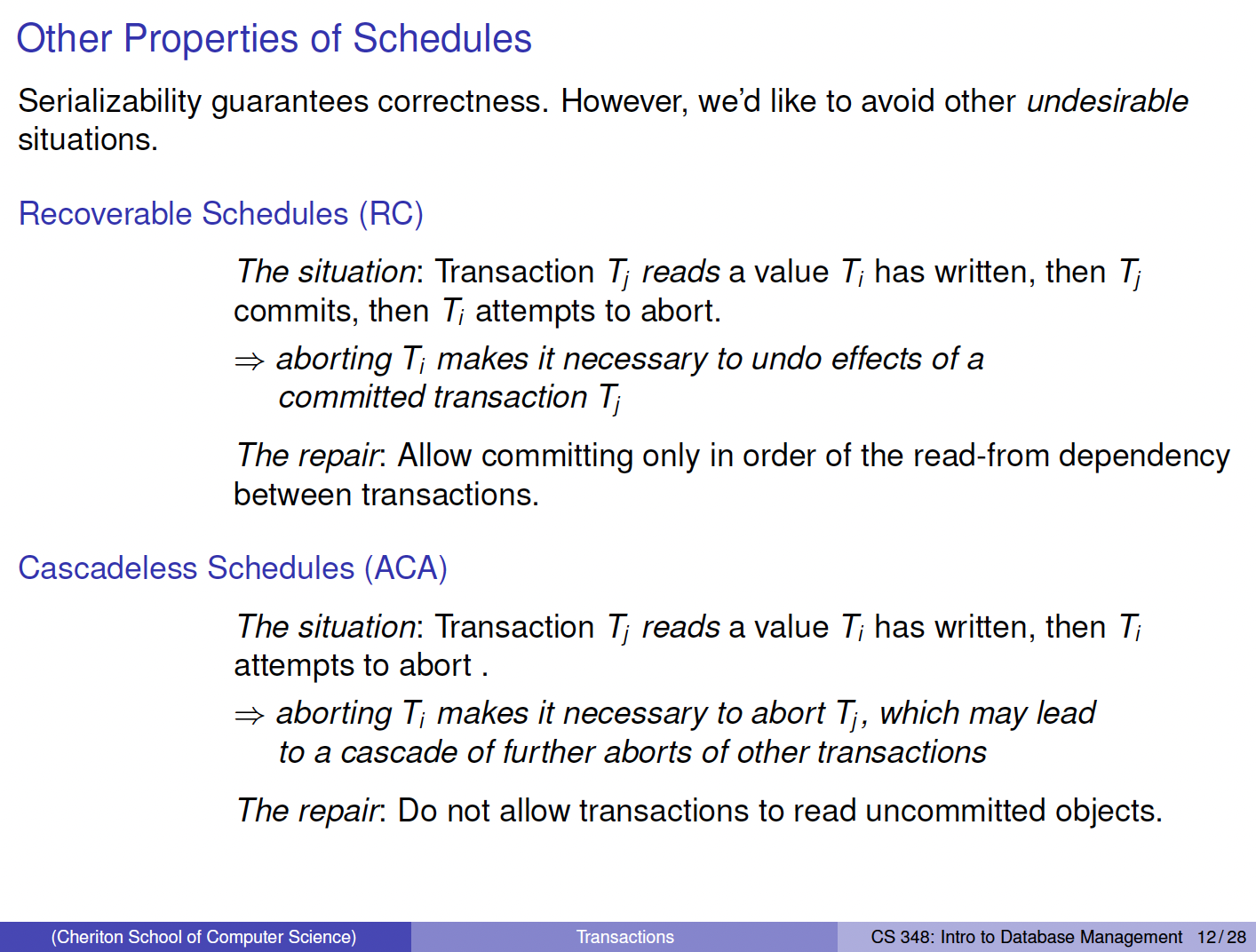Concurrency Control
This is concurrency in terms of databases? Learned in CS348.
Assumptions
We consider a database to be a finite set of independent physical objects that are read and written by transactions , and write:
- to say that transaction reads object , and
- to say that transaction writes (modifies) object .
Transaction
A Transaction is a sequence of read and write operations on a database
where is the commit request of
Schedule
For a set of transactions , we want to produce an execution order of operations , called a schedule, such that
- every operation appears also in , and
- ’s operations in S are ordered the same way as in .
Goal: Produce a correct schedule with maximal parallelism.
If and are concurrent transactions, then it is always correct to schedule the operations in such a way that:
- will appear to precede meaning that will “see” all updates made by , and will not see any updates made by , or
- will appear to follow , meaning that will see ’s updates and will not see ’s.
Idea
Define a schedule to be correct if it appears to clients that the transactions are executed sequentially, that is, in some strictly serial order.
Serializable Schedule
A schedule is said to be serializable if it is equivalent to some serial execution of the same transactions.
Serializable Schedules Examples: An interleaved execution of two transactions:
An equivalent serial execution ():
An interleaved execution with no equivalent serial execution:
Theorem
A schedule is serializable if and only if the Serialization Graph for is acyclic.
Serializability guarantees correctness. But we’d like to avoid other undesirable situations:

Conflict Serializable
A schedule is conflict serializable if it is conflict equivalent to some serial schedule , i.e. like .

Conflict Serializable is a GOOD thing